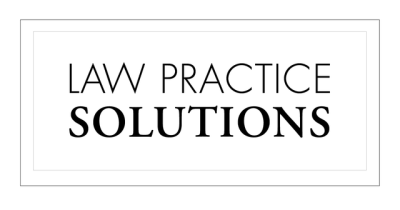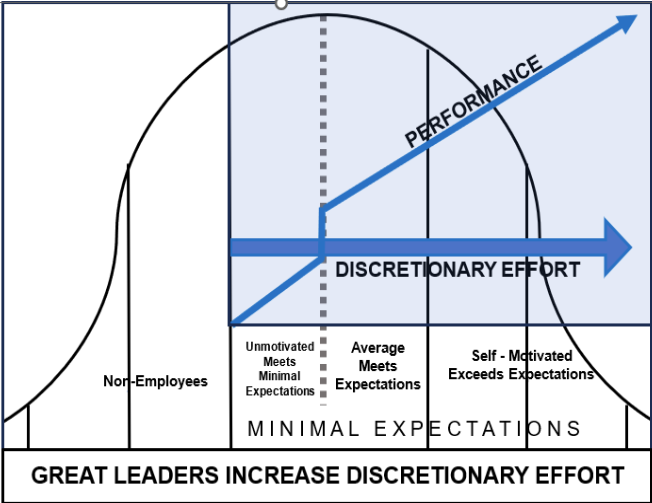
The times they are a changin’.
When Bob Dylan wrote these words in 1963, baby boomers were the emergent workforce. Now, a new generation of lawyers entering the profession present managing partners and supervisors with a multitude of challenges. This article is designed to equip managers with practical leadership strategies that will increase productivity, reduce financial loss due to unwanted attrition, and find ways to tap into self-motivators that successfully work across generational groups including Generation Z. These motivators exist, but tapping into them takes effort and intentionality.
Many reports on the Great Resignation have focused on dissatisfaction with pay.1 However, according to a May 2023 report from the Citizens Research Council of Michigan, compensation ranks 16th on the list of reasons for leaving a job.2 This result is consistent with evidence that pay has only a moderate impact on employee turnover.3 Generally, corporate culture is a more reliable predictor of attrition than compensation.
An October 2023 survey of associates in large law firms found that one in four plan to leave their firm within the next year.4 Three out of five associates believe that their firms are not actively trying to retain them.5 Additionally, associate discontent appeared disconnected from the recent slowdown in lateral hiring6 despite general industry-wide pay increases by firms attempting to attract and retain skilled associates.
Current marketplace challenges are influenced by dynamics already impacting the legal workforce, namely the goals of Generation Z employees. Gen Z seeks greater work-life balance, a culture focused on the long-term development of people, and mental health — or “whole person” — needs.7 Attracting and retaining skilled employees today requires managers to understand that maintaining the status quo may be perilous.
Finding an answer to attrition, lack of employee motivation, and/or commitment problems starts by looking at a universal performance factor: employee discretionary effort.
Look at the bell curve. You’ll notice that one standard deviation (+1SD/-1SD) on either side of the median represents most of your staff. People perform to expectations, some a little higher, some a little lower, but still within the safety margin. Lower performing employees (-1SD) understand they are not in immediate danger of termination. Average performers (+1SD) are working harder (or are more talented) but not going the extra mile. Then, there are the stars. You know who they are and compensate them well for the increased revenue they generate.

So, what’s really going on here? And what can you do about it?
FOCUS ON DISCRETIONARY EFFORT
Discretionary effort is effort an employee is not required to give but capable of giving if they are self-motivated to do so. In reality, no one is required to give much more than their supervisor expects. They are aware their jobs are not at risk. Those performing above minimal expectations may be more skilled and more motivated than those below. So, how can you influence and increase self-motivation, effort, and skill totally at your employees’ discretion?
As a leader, you have three tools at your disposal:
To know or be known.
To be a part of something bigger than oneself.
To make a positive difference for someone or something.
TO KNOW OR BE KNOWN
Personal acknowledgement
No one wants to be a nameless face in the crowd, just another suit on the 2nd floor, or that lady from our admin pool. “To know or be known” does not mean your associate wants to be your Facebook friend or dinner guest; it means that you recognize their face, know their name, and know what they do for you and your firm. When you tell them they’ve done a good job, they believe you have a clue about what they did.
As for memorizing names and faces, Nike said it best: just do it. It also helps to greet them on occasion.
Professional acknowledgement: successful work
Leaders don’t just teach skills; they notice when skills are being performed well. It’s a subtle way of showing employees that what they do matters and is important. Unfortunately, providing credible positive feedback is challenging.8
Most compliments focus on an admirable trait or characteristic:
“Great job!”
“Way to go!”
“You are the best!”
“Excellent job on the Smith case.”
You’ll notice that most compliments are primarily adjectives (great, best, excellent) describing nouns (job, way, case). Unfortunately, these compliments consistently fail the credibility test. Compliments with the best chance of being received positively zero in on behavior. This means using verbs. What did the person do?
The home run compliment
The home run compliment model provides effective, credible, encouraging feedback that positively affects the bottom line.
First base: A statement of appreciation or quality, such as “Thanks”; “I appreciate ...”; “Great job!”; Way to go!” Using three at the same time is not a home run. You’ve just reached first base three times.
Second base: A behavior-specific statement, like, “Thanks for putting in the extra time yesterday to modify the Phillips brief to address the last-minute points we discussed. I know the brief is due today and I appreciate your effort.”
Third base: A positive impact statement. It expands upon the specific behavior you mentioned at second base by noting the positive impact on your organization’s goals and reputation, your client’s goals, your goals, and your associate’s career.
“Thanks for putting in the extra time yesterday to modify the Phillips brief to address the last-minute points we discussed. You took a good brief and made it excellent. It best positions the Phillips Company in this ‘bet the business’ litigation. Sam Phillips and I deeply appreciate your sacrifice to help him save his life’s work.”
Home run: Delivering your statement with sincerity. Groucho Marx once said, “The secret of life is honesty and fair dealing. If you can fake that, you’ve got it made.”9 While sincerity is key to success, it must be genuine, and sincerity alone is never enough. Not getting thrown out at first, second, or third base makes your statement credible.
Professional acknowledgement: less than expected performance
Leaders are responsible for helping employees succeed. Sometimes, this means correcting behavior that doesn’t produce the best results. The reality is that no one takes a job intending to fail. We all want to succeed.
If you do not believe this about an employee, adopt an “as if” approach that will help you always keep your cool, which is essen tial. The very hint of criticism can elicit defensiveness, but someone must control the situation and, unfortunately, that job falls to you. It is important that your employee recognizes your positive intent – that your recommendations, directions, and guidance are meant to help them achieve success and you believe they have the potential to be a valuable asset.
THE COMPASSIONATE CRITICISM MODEL
This article’s co-author, leadership trainer June Kenny, cites compassionate criticism as one of her most requested training topics.10 Using a compassionate criticism model to address performance lets you state what needs to be done and why without anger or accusation and give reasons they might want to change their behavior; allows you to act in a respectful, non-adversarial manner; and gives all parties an avenue to find personal satisfaction in making a positive impact.
In her book, “Lead Strategically”, Kenny outlines a method called Criticism With A. H.E.A.R.T.11
Criticism With A. H.E.A.R.T.
A. The opener: ask for help to solve a problem.
H. Describe what’s happening now, i.e. the negative/ineffective behavior.
E. Explain the end result, i.e. the negative impact of their behavior.
A. Make a request for alternate behavior you believe fixes the problem.
R. Resolve the problem together by engaging in two-way dialogue and selecting the best fix.
T. Thank them in advance for their future cooperation.
Each step of the model works in the following way:
A. Ask for help to solve a problem. You have a reasonable, non-threatening, effective way to start a difficult conversation; you acknowledge there is a problem, and the others are either unaware or discount the severity; and you provide a reason/motivator to change their behavior.
H. Describe what’s happening in objective terms — what you’ve seen and heard without exaggeration or interpretation. Use your “butter voice” (the voice you use when you ask someone at the dinner table to pass the butter.
E. Explain the end result. This is the most important motivator you have. Most people seem genuinely surprised their behavior is causing a problem.
A. Make a request for alternate behavior you believe fixes the problem. Note that is important to get through the first four steps in 60 seconds or less!
R. Resolve the problem together by engaging in two-way dialogue and selecting the best fix. Ask, what do you think? Would this be possible? Do you have any ideas that might resolve this problem? You might get a better solution than the one you proposed.
T. Thank them in advance for their future cooperation. Genuine gratitude motivates. Remember, you are the one with the problem and need their cooperation.
As the newest generation enters the multi-generational legal profession, successful law firms will have the skills to minimize turnover and increase productivity in a healthy work culture.
Next month, we’ll complete our look at how law firms can reduce attrition and increase productivity by tapping into employee discretionary effort.